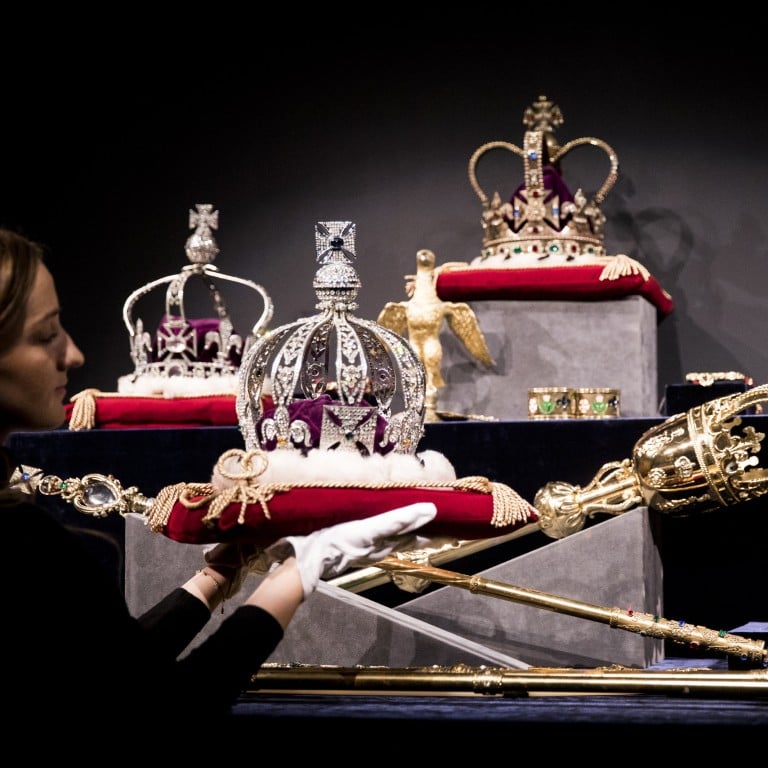The history behind Queen Elizabeth’s dazzling jewellery: the late British monarch shone in the Imperial State Crown, Sovereign’s Sceptre, Fringe Tiara and Cullinan V Brooch – but who owns them now?

- At Elizabeth’s funeral, the Imperial State Crown, Sovereign’s Sceptre and Sovereign’s Orb were placed on her majesty’s coffin, as icons of the British monarchy
- The late queen wore a brooch for many occasions, such as the Williamson brooch for the weddings of King Charles and Princess Diana, Lord Linley and Prince Edward
Massive and unwieldy, they embody the great weight of the office they denote, but the woman who carried them – mostly only figuratively – was noted for her personal touch with precious jewellery of a finer scale too. For the seven decades of her reign, Queen Elizabeth showed judgment and finesse through these subtler projections of power.

Together, the orb and sceptre, presented to the late queen at her coronation ceremony in 1953, represent the crown’s centuries-old claim to governance. There she was formally crowned, as tradition dictates, with St Edward’s Crown, before leaving Westminster Abbey at the end of her coronation wearing the Imperial State Crown.
“She was crowned with the immensely important – and heavy – St Edward’s Crown, the crown uniquely reserved for the moment of the coronation itself. This crown was replaced with the much lighter Imperial State Crown – which she also wore to the openings of parliament, and was also the main crown placed on her casket,” says Helen Molesworth, Dr Genevieve Davies senior curator – jewellery at Victoria & Albert Museum (V&A), London.
What these hugely powerful pieces have in common is that they are all mounted with a marvellous collection of precious stones, many of them historic.

“It has a drill hole in the centre which apparently the queen was amused to learn would be used to have a feather put through it by earlier monarchs,” says Molesworth.
She also notes that these feature stones came from across the world: “The sapphire would have come from Sri Lanka, the spinel from Tajikistan and the diamond from South Africa,” she says.